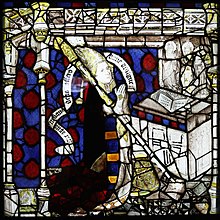Michael Northburgh, otherwise Michael de Northburgh (Northborough), was the Bishop of London between 1354 and his death in 1361. He was the nephew of Roger Northburgh, Bishop of Coventry and Lichfield.
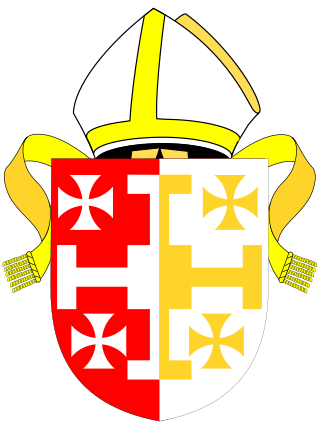
The Diocese of Lichfield is a Church of England diocese in the Province of Canterbury, England. The bishop's seat is located in the Cathedral Church of the Blessed Virgin Mary and Saint Chad in the city of Lichfield. The diocese covers 4,516 km2 (1,744 sq mi) of several counties: almost all of Staffordshire, northern Shropshire, a significant portion of the West Midlands, and very small portions of Warwickshire and Powys (Wales).

Walter Langton of Castle Ashby in Northamptonshire, was Bishop of Coventry and Lichfield and King's Treasurer. The life of Langton was strongly influenced by his uncle William Langton, Archbishop of York-elect, by Robert Burnell, Lord Chancellor of England and then by the years in which he served King Edward I. Lichfield Cathedral was improved and enriched at his expense.
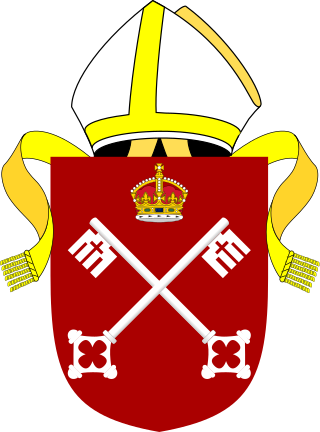
The Diocese of York is an administrative division of the Church of England, part of the Province of York. It covers the city of York, the eastern part of North Yorkshire, and most of the East Riding of Yorkshire.
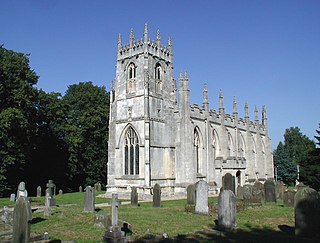
Skirlaugh is a village and civil parish in the East Riding of Yorkshire, England, in an area known as Holderness. It is situated approximately 7 miles (11 km) north-east of Hull city centre on the A165 road. Originally a farming community, it is now primarily a commuter village for Hull.

The Diocese of Coventry is a Church of England diocese in the Province of Canterbury. It is headed by the Bishop of Coventry, who sits at Coventry Cathedral in Coventry, and is assisted by one suffragan bishop, the Bishop of Warwick. The diocese covers Coventry and Warwickshire.
Alexander Neville was a late medieval prelate who served as Archbishop of York from 1374 to 1388.
William Booth or Bothe was Bishop of Coventry and Lichfield from 1447 before becoming Archbishop of York in 1452 until his death in 1464.
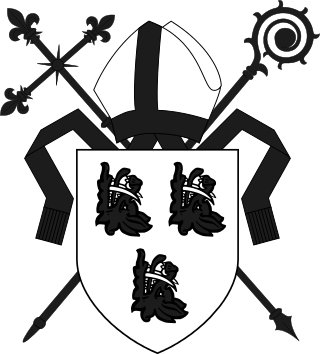
Lawrence Booth served as bishop of Durham and lord chancellor of England, before being appointed archbishop of York.

John Waltham was a priest and high-ranking government official in England in the 14th century. He held a number of ecclesiastical and civic positions during the reigns of King Edward III and Richard II, eventually rising to become Lord High Treasurer, Lord Privy Seal of England and Bishop of Salisbury. He is buried in Westminster Abbey, London.
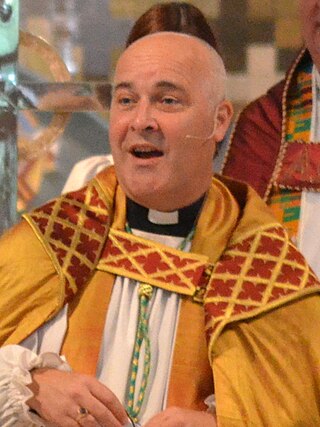
The archbishop of York is a senior bishop in the Church of England, second only to the archbishop of Canterbury. The archbishop is the diocesan bishop of the Diocese of York and the metropolitan bishop of the province of York, which covers the northern regions of England as well as the Isle of Man.
Thomas Rushhook was an English Dominican, bishop and chaplain to Richard II of England.
Richard Peche was a medieval Bishop of Lichfield.
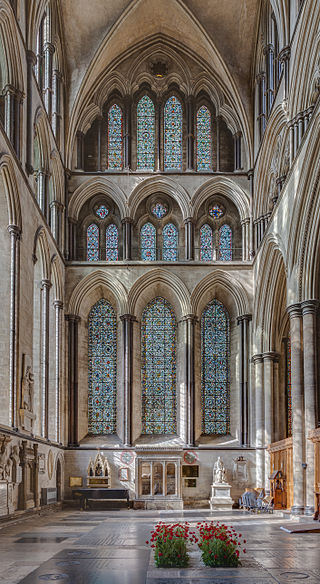
John Blyth or John Blythe was a medieval Bishop of Salisbury.
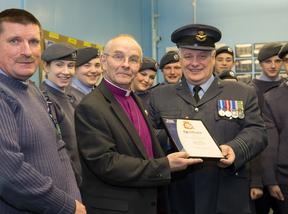
Mark Watts Bryant is a retired British Anglican bishop. From 2007 to 2018 he was the Bishop of Jarrow, the suffragan bishop of the Diocese of Durham in the Church of England.
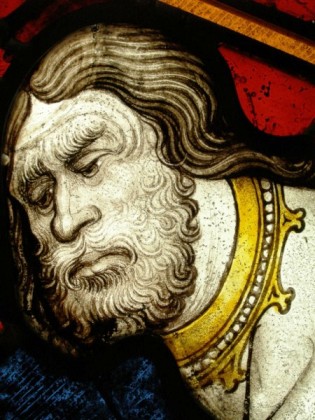
John Thornton of Coventry was a master glazier and stained glass artist active in England during the 15th century. The output of his workshop includes some of the finest English medieval glass.

Swine Priory was a priory in the village of Swine in the East Riding of Yorkshire, England. The site of the Cistercian nunnery is a Scheduled Monument.
Michael Geoffrey Ipgrave is a British Anglican bishop. Since 2016, he has been the 99th Bishop of Lichfield, the diocesan bishop of the Diocese of Lichfield. He was the Bishop of Woolwich, an area bishop in the Diocese of Southwark, from 2012 to 2016. He served as Archdeacon of Southwark between 2004 and 2012.
Hamo was a 12th- and 13th-century English cleric. He was the Diocese of York's dean, treasurer, and precentor, as well as the archdeacon of the East Riding. His background is unknown, but he was probably a canon of the cathedral chapter at York Minster by 1171. He claimed to have been treasurer of the chapter by 1189, but did not actually hold the office until 1199. Hamo clashed with his archbishop, Geoffrey several times, and when Geoffrey died, Hamo's fellow canons were forbidden by King John of England from electing Hamo to succeed Geoffrey. Hamo died sometime after 1219, when he was last attested as holding his final office, dean.
